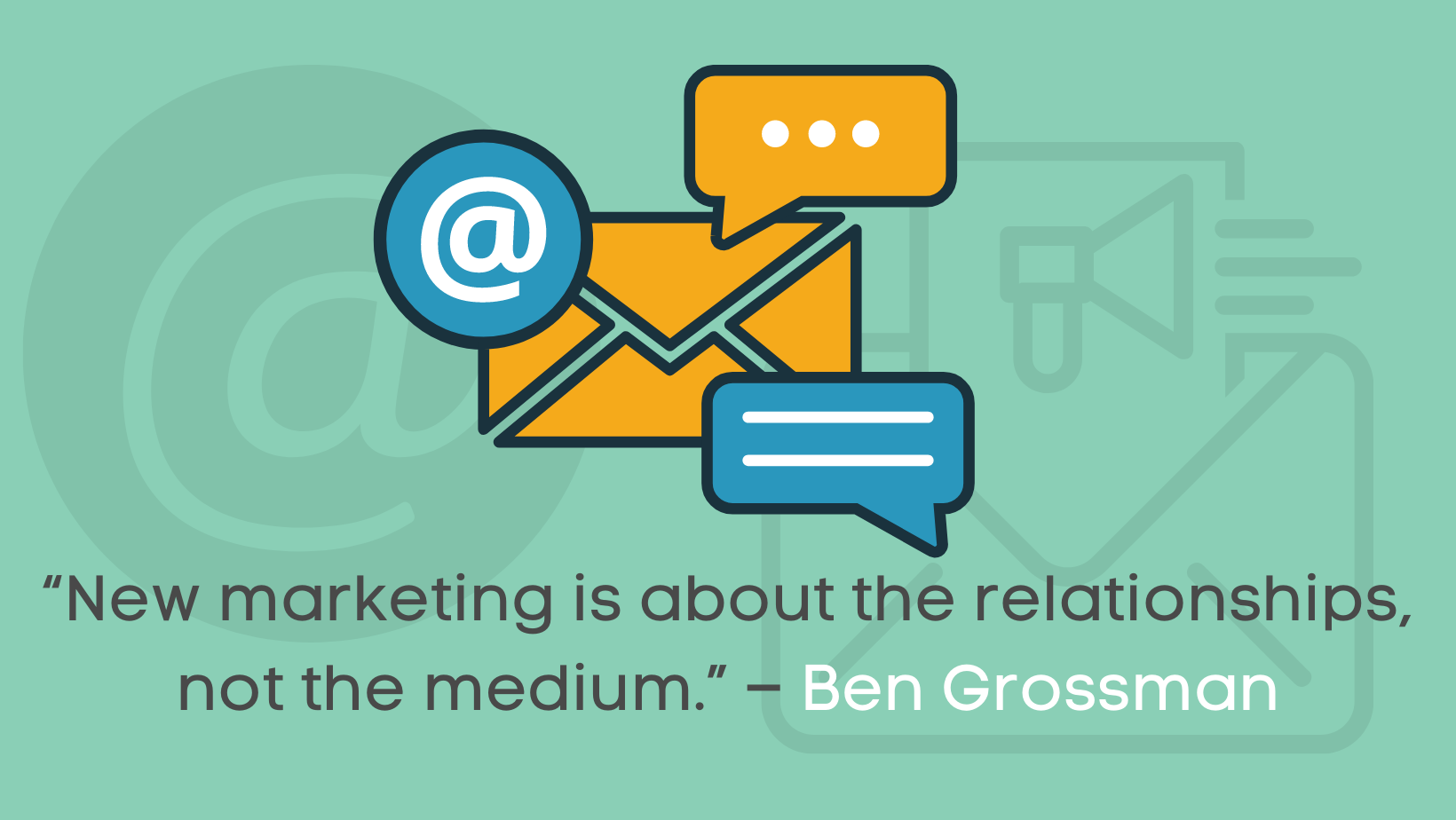There’s no denying that marketing automation is an effective strategy. Marketing automation can improve leads by 88 per cent of marketers and conversions by 77 per cent. It is a powerful tool on its own, but what happens when you enhance those results with the appropriate integrations?
Marketing automation and customer relationship management (CRM) integration may help you double your outcomes, convert more marketing qualified leads (MQLs) to sales qualified leads (SQLs) and increase sales. You’ll need the correct tools to reach your target market. After all, you want to expand your business by sending the appropriate message to the right people at the right time. Understanding how those tools may work together to produce greater sales outcomes is an important component of having them work harder for you.

Why integrate Marketing automation with your CRM?
You can harness the potential of each tool’s capabilities and revolutionize how you connect and communicate with clients by combining your marketing automation with your CRM. Here are a few examples:
- Consolidating important actions and information to organize and streamline your company’s prospecting and client retention efforts.
- Capturing more advanced customer journey information that sales and marketing may use to prioritize efforts with Marketing CRM Software.
- Preventing wasted productivity and squandering valuable resources on bad leads.
Sales and marketing frequently connect with prospects and consumers in a variety of ways, seeking to appeal to various pain areas. Combining marketing automation with CRM improves visibility and ensures uniform, targeted messaging to multiple groups and people.
If you ever update or edit your communications, both teams will be able to see the changes and make adjustments as needed.
Guiding users via Customer journey
One of the main benefits of connecting your marketing automation solution with your CRM is that it allows your marketing and sales teams to acquire more leads and assist more prospects through the buying cycle, resulting in more revenue.
Your team may evaluate the available data to analyse how the client or customer is engaging with your company’s website, goods, and services when marketing automation and CRM are in line.
As a consequence, based on where they are in the customer journey, you can provide them meaningful information that informs purchase choices and increases conversions.
Integrations between marketing and CRM systems improve data health
Whatever sales and marketing goals you have in mind are dependent on the quality of your email list, yet many businesses struggle with data cleanliness. According to research, about 10% and 25% of business-to-business (B2B) marketing database contacts have serious mistakes.
As a result, many marketers send emails to unconfirmed or disinterested recipients who are no longer interested in receiving them.
These undesired emails are subsequently labelled as “spam,” resulting in lower deliverability and open rates as well as a tarnished image.
You’re significantly more likely to maintain a high degree of data hygiene – and guarantee that your communications are received and opened – if you use a single system to enter and monitor your data.
There are several benefits to integrating your CRM and marketing automation platforms, but the most important benefit is that it aligns everything else that your sales and marketing teams are working on to establish synchrony between the two departments. Still, it’s one thing to preach about the benefits of integration; it’s another to put those benefits into practice. Let’s get started.
Use These Pointers to Get the Most Out of Your Automation Integration Relationship
Do your marketing automation tool and customer relationship management (CRM) systems work together? If that’s the case, you’re off to a wonderful start. However, just because they’re connected doesn’t imply, they’re on the same page. Or, to put it another way, it doesn’t mean your marketing and sales teams are collaborating to achieve alignment.
Here are five recommended practices to ensure that your CRM and marketing automation integration efforts are successful.
1. Use marketing and sales personalization to your advantage.
The underlying benefit of integrated marketing automation is that it allows marketers to tailor campaigns at both the corporate and individual levels to appeal to their target consumers. You may boost that degree of personalisation even further by correctly integrating an excellent CRM.
For example, your CRM should be able to seamlessly transfer critical data (business size, deal stage, deal size, deal status) to your marketing automation solution, saving you time and effort. Your marketing staff may then utilise this data to make their main deliverables more focused and direct, particularly when it comes to providing content to help late-stage customers convert.
Another approach to use marketing and sales customization by integrating your CRM with your marketing automation software is to make sure prospect emails look to come from their allocated sales reps. This implies that your marketing automation technology should be able to immediately retrieve crucial data from the CRM and change key email identifiers like the “From” name, address, and even the sender’s email signature.
2. Establish an accurate lead score
The quicker you reply to a lead, the more probable it is to turn into a customer. According to studies, companies that reply to leads within five minutes are 100 times more likely to connect and convert leads. B2B sales teams, on the other hand, take an average of 42 hours to respond to a new lead, and 38% of those leads never respond. 90% of the leads become fully inactive within 30 days.
Lead scoring is an excellent approach for automatically determining whether leads are ready to be sent to sales. Identify which user interactions and qualities are the most relevant to your business, then give point values to each engagement.
The key interactions will differ per company, but common lead scoring behaviours include reading an email, downloading an eBook, and viewing a price page.
Make sure you gather feedback from important sales, marketing, and executive stakeholders before implementing your scoring strategy.
3. Maintaining visibility into Post SQL (Sales Qualified Lead) Activity
Just because you’ve switched from MQL to SQL internally, a lead isn’t going to change how they engage with your firm overnight. Additionally, the activities they do and the way they interact with you online will have a direct impact on how your sales staff communicates with them. As a result, those same sales representatives require a clear view of those actions.
Most CRMs can provide up-to-the-minute, if not real-time, information on these post-SQL operations, allowing sales agents to respond properly based on lead behaviour. Reps should only get highly relevant information after a lead is handed to sales.
Set up triggers for activities at the bottom of the funnel, such as downloading a product comparison checklist or a buyer’s guide. This will notify your sales staff when it’s time to change or speed up their approach to a lead or customer.
4. Eliminate duplicate instances
One of the most significant advantages of combining your marketing automation platform and CRM is the ability to consolidate your data through automatic communication between the two platforms.
Prospects don’t always contact you in the same way, which might lead to duplicate records in your database.
Let’s say if a prospect downloads an eBook and then contacts your organisation and connects with a salesperson, the salesperson’s first instinct could be to input the prospect into the CRM. If the prospect has previously registered in your marketing automation solution, this might result in duplication.
5. Agility in Integration
The first month or two of your new CRM and marketing automation connection will be fantastic. You can link your sales and marketing teams in ways you never imagined, and you’ll almost certainly witness a boost in productivity and performance.
To keep this advantage, you’ll need to make adjustments at frequent intervals over the life of your integration – most likely to both the CRM and your marketing automation technology.
So, to avoid downtime, you’ll probably need to adapt on the go. This implies your integration must be set up in a way that does not need much coding skills.
Conclusion
Many marketing automation tools necessitate complex, time-consuming CRM connectors or make it impossible to move your data if you decide to part ways with the vendor. Choose a platform that works seamlessly with the most popular and sophisticated CRMs, like Salesforce, Dynamics 365 and Zendesk.
Your technological stack should work together flawlessly to provide a real-time data sync that allows you to get deeper insights into client interests and habits while also propelling your organisation ahead.
Talk to us about how your current CRM can work with Act-On to help you achieve the sales outcomes you want.



